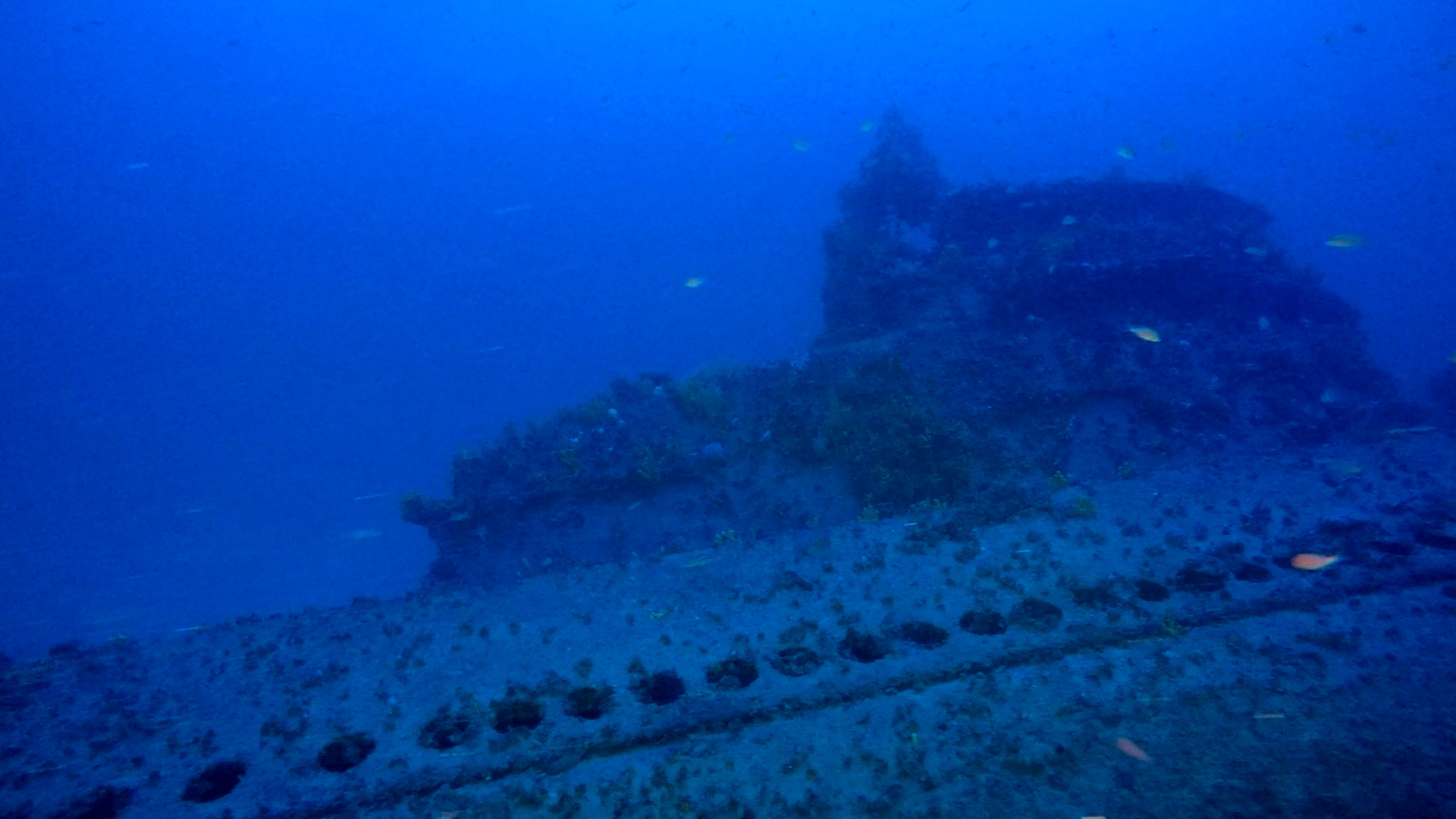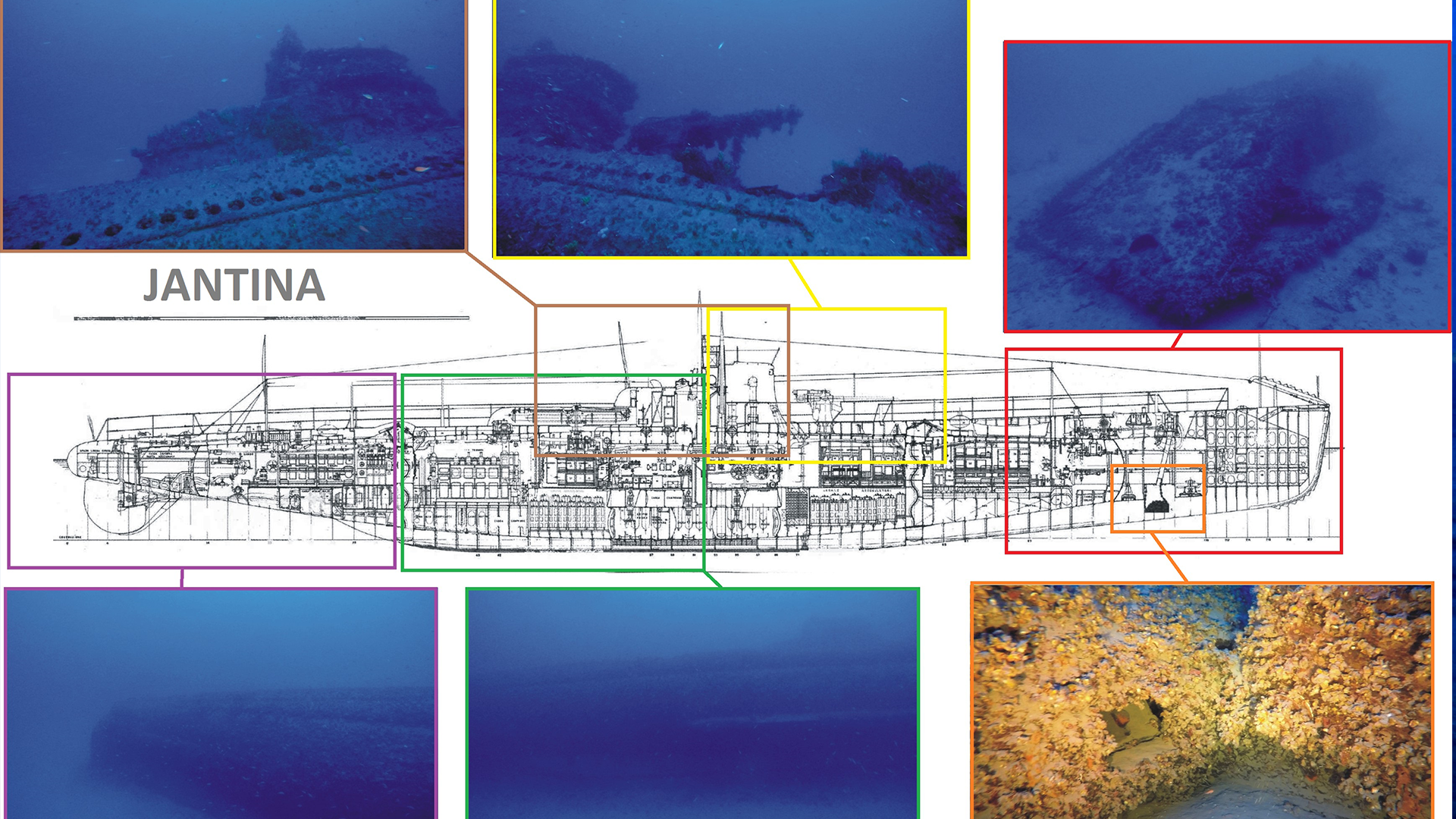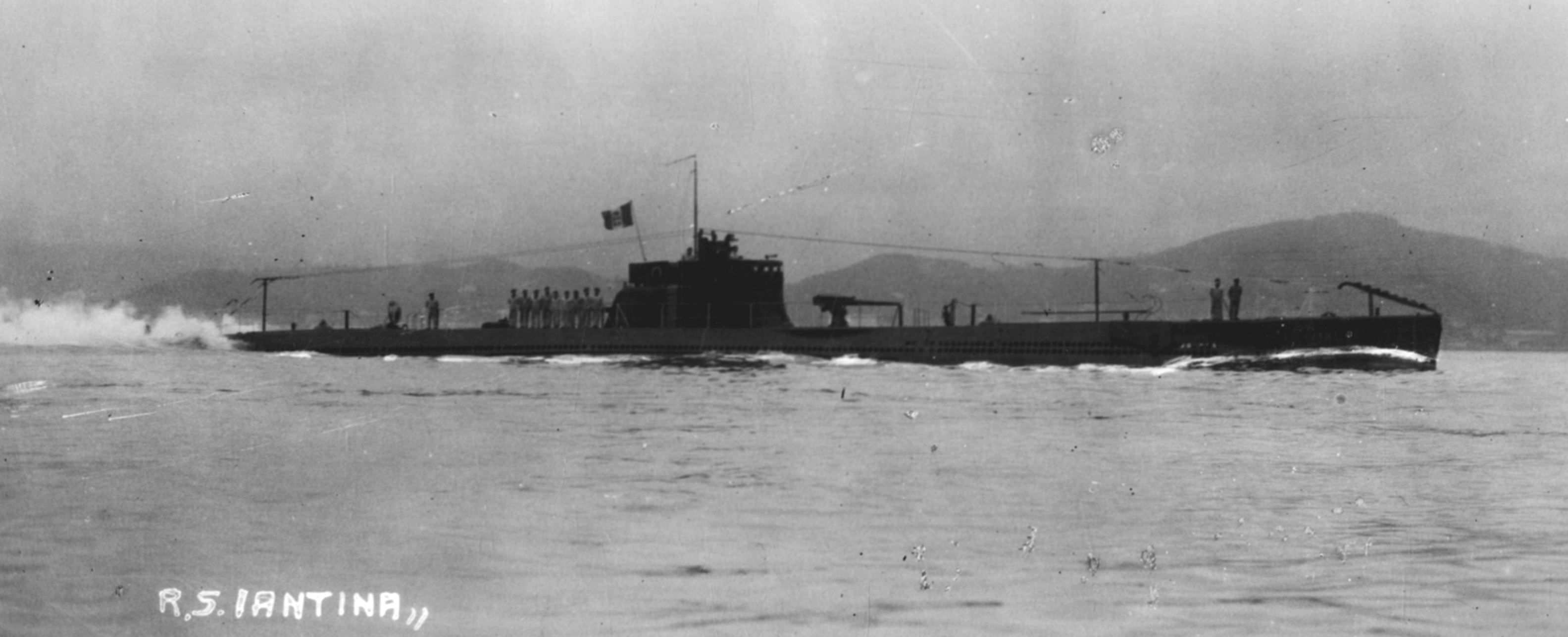
Bow of Italian sub sunk by Royal Navy rival discovered after lying underwater for 83 years

The bow of an Italian navy submarine that was sunk by a British sub during the Second World War has been discovered after lying underwater for 83 years.
Regia Marina submarine Jantina, which was launched in 1932 in La Spezia, was part of the formidable Argonauta class, measuring 61.5 metres in length and armed with four torpedo tubes at the bow, two at the stern and a 102/35 naval deck gun - ironically a licensed variant of the British QF 4-inch naval gun Mk V.
She met her match on 5 July 1941 in the waters south of Mykonos.

Jantina was on a mission from Leros to Messina, with 48 submariners on board. As she sailed on the surface she was unaware of the presence of rival Royal Navy submarine HMS Torbay.
According to HMS Torbay's battle log, the British submarine detected Jantina from a distance of just under four nautical miles and prepared for combat.
At 20:16, a salvo of six torpedoes was launched. Jantina's crew tried to evade the attack, but just a minute later two torpedoes struck home, resulting in a catastrophic explosion that severed the Italian submarine's bow.

A German Luftwaffe Junkers Ju 52 aircraft flying from Rhodes to Athens witnessed the attack and raised the alarm, prompting the dispatch of three Italian MAS torpedo boats from Syros, a motorboat from Samos and three seaplanes from Rhodes and Leros to the area.
Before the Jantina sank, over 20 of the 48 crew members managed to get out of the stricken sub. However, only two officers and four petty officers survived, reaching Delos after more than six hours in the water.
The survivors were later transported to Piraeus by seaplane. Among the 42 men who perished was the submarine's commanding officer, Vincenzo Politi, whose body was later recovered.
Jantina was a large submarine, weighing 810 tons. On the surface, she could reach a maximum speed of 14 knots and eight knots when submerged, with a maximum operational depth of 80 metres.
Although submarine on submarine battles are extremely rare, Jantina could have put up a fight.
But according to Kostas Thoctarides, the diver and researcher responsible for finding Jantina and bringing her story to light, she was caught off guard by the Royal Navy sub.
"The closed torpedo tubes are also visible, which shows that the Jantina was not in a state of combat readiness and therefore did not realise the danger presented by the British submarine," he explained.
Mr Thoctarides is a renowned Greek diver who has explored more than 500 wrecks since his first dive in 1986, including those of crashed helicopters as well as ships and submarines.
The story of Jantina took two years to evolve. Beyond the physical discovery, Mr Thoctarides' team delved into historical archives, unearthing rare documents from Italian, British and German sources.
The documents paint a vivid picture of the Jantina's final voyage and the events that led to her sinking.
In November 2021 Mr Thoctarides located the bulk of the Jantina at a depth of 103 metres. The submarine lay on the seabed at a 53-degree angle to the left, its conning tower and deck gun visible, periscopes down, and the conning tower's manhole open.
The bow, however, was found only recently at a considerable distance from the main wreck, resting on its port side, but remarkably well preserved after 83 years.
"We are actually talking about two parts of the wreck the bow and the rest of the submarine which is the longest part. While the bow sank immediately, the rest of the submarine continued to sail and sank later, travelling a considerable distance to the sea surface," he said.
If the doors to the internal compartments on the submarine were all closed, it could still float for some time after losing the bow, with the buoyancy inside the hull keeping it afloat.
This could explain why it took two years to find the bow, which was a considerable distance away from the main wreck.









